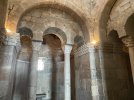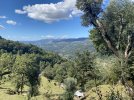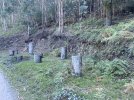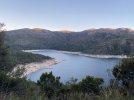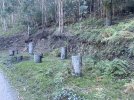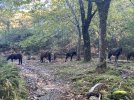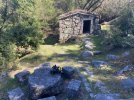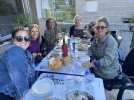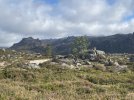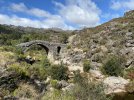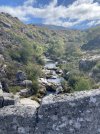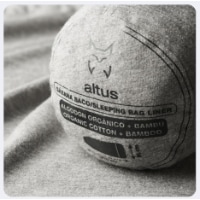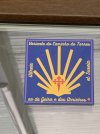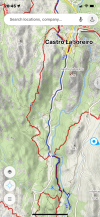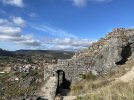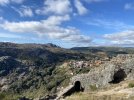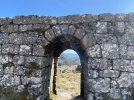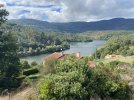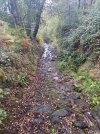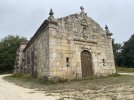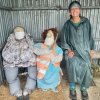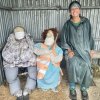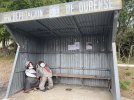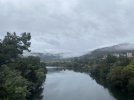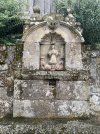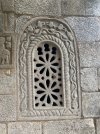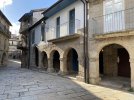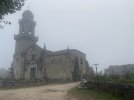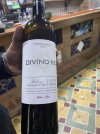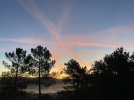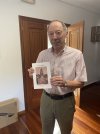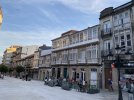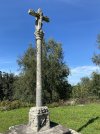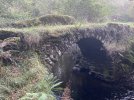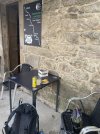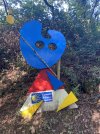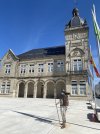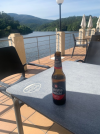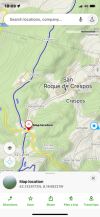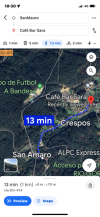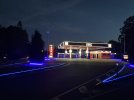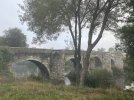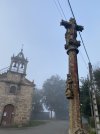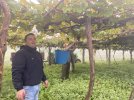When I got to Braga on the Torres, I switched over to the Geira. I relied a lot on @jungleboy’s thread to figure out my stages. His thread and the notes about distances that I had copied down from the guidebook (which I did not bring) were really all I needed. Calling a day in advance was all that was necessary.
No albergues, except for the albergue in Caldelas, on the first day from Braga. I had planned to stay there, but as I walked into town, I saw on the left a very pleasant garden with tables in front of the Corredoura Garden hostal. There was a room, so I just took it. I was glad I hadn’t called ahead to the albergue.
One website that has info on the several camino options from Braga, debragaasantiago.com has an over the top warning that they do not recommend walking this camino now because of issues with marking. NONSENSE, at least if you have a GPS. Just as I did on the Torres, I had offline tracks and maps on wikiloc. I had my phone in my waist pack. The app beeps at you if you take a wrong turn. That’s all you need.
This is a great combination to consider with the Torres, but you have to be prepared for no albergues (except Caldelas) and no peregrinos. I spend two weeks in Lisbon every year teaching a course (in English), and I found I had enough Portuguese to intereact with people. I had some really wonderful encounters.
My FindPenguins site has more info, but I would be very happy to give opinions, answer questions, etc.

 findpenguins.com
findpenguins.com
It’s a great caminho, I would walk it again happily, but there are no peregrinos. You will find people/walkers/ramblers in the area around the Peneda Geres park, so that’s a nice occasional break from the solitude, but I found I was very happy to just walk with me and my unwinding brain.
Edited to add - here is a link to my 2022 comments on the Torres. I know many people walk them as a combo, but they are different caminos, so I think it’s best to keep each in its own subforum.
No albergues, except for the albergue in Caldelas, on the first day from Braga. I had planned to stay there, but as I walked into town, I saw on the left a very pleasant garden with tables in front of the Corredoura Garden hostal. There was a room, so I just took it. I was glad I hadn’t called ahead to the albergue.
One website that has info on the several camino options from Braga, debragaasantiago.com has an over the top warning that they do not recommend walking this camino now because of issues with marking. NONSENSE, at least if you have a GPS. Just as I did on the Torres, I had offline tracks and maps on wikiloc. I had my phone in my waist pack. The app beeps at you if you take a wrong turn. That’s all you need.
This is a great combination to consider with the Torres, but you have to be prepared for no albergues (except Caldelas) and no peregrinos. I spend two weeks in Lisbon every year teaching a course (in English), and I found I had enough Portuguese to intereact with people. I had some really wonderful encounters.
My FindPenguins site has more info, but I would be very happy to give opinions, answer questions, etc.

Camino 2022 , Torres and Geira | FindPenguins
About 640 km, starting in Salamanca, heading over to Portugal, and north from Braga to Santiago. I am combining two different caminos, the Camino de Torres and the Caminho da Geira e dos Arrieiros.
It’s a great caminho, I would walk it again happily, but there are no peregrinos. You will find people/walkers/ramblers in the area around the Peneda Geres park, so that’s a nice occasional break from the solitude, but I found I was very happy to just walk with me and my unwinding brain.
Edited to add - here is a link to my 2022 comments on the Torres. I know many people walk them as a combo, but they are different caminos, so I think it’s best to keep each in its own subforum.
Last edited:











